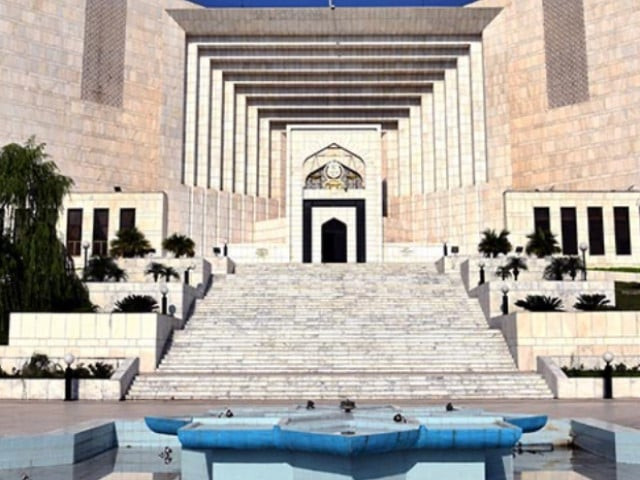Top court suspends LHC order on election tribunals
Orders CEC, high court’s CJ to address issue through ‘meaningful consultation’

A five-judge larger bench of the Supreme Court on Thursday while overruling PTI’s objections suspended the Lahore High Court’s decision as well as the Election Commission of Pakistan’s notification for the establishment of eight tribunals in Punjab until its final verdict in the case.
The larger apex court bench, headed by Chief Justice Qazi Faez Isa, was hearing a petition challenging the LHC’s decision to appoint tribunals for settling election disputes.
The SC bench, which also comprised Justices Aminuddin Khan, Jamal Khan Mandokhail, Naeem Akhtar Afghan and Aqeel Ahmed Abbasi, held that the chief election commissioner (CEC) and the LHC chief justice should hold a meaningful consultation on election tribunals.
On May 29, Justice Shahid Karim-led single judge of the LHC ordered the ECP to notify additional election tribunals for Punjab in light of the nominations sent by the high court’s CJ. It held that under Article 219(c) read with Article 222(b) of the Constitution, the LHC chief justice had the pre-eminence in the appointment of election tribunals under Section 140 of the Elections Act, 2017.
Later on June 12, the LHC CJ formed eight election tribunals in line with the May 29 order, compelling the ECP to challenge the decision.
The SC hearing on Thursday commenced with a heated exchange between CJP Isa and PTI lawyer Niazullah Niazi, who objected to the top judge’s inclusion in the bench.
However, Niazi’s objection was swiftly overruled by Justice Isa. “Your objection has been noted. Please take your seat. This matter is between the Election Commission and the [LHC] chief Justice. Why does a private individual have such an interest in this case?” he remarked while addressing Niazi.
“Why not refer Niazullah Niazi’s case to the Pakistan Bar Council? Are we here to be insulted? Enough is enough,” the CJP continued. “We are aware of your [Niazi’s] political affiliation and will not tolerate continued contempt of the judiciary. This must end.”
Justice Isa emphasised that the authority to form benches now vested with the SC’s Practice and Procedure Committee, marking an end to the era when the top judge had that prerogative.
Niazi, alluding to PTI founding chairman Imran Khan, said that the “one in jail” had objected that his electoral symbol was taken away.
In response, the CJP remarked that the court had provided video link facilities to Imran from jail but no objections were raised at that time.
“[PTI lawyer] Ali Zafar did not raise any objections in the intra-party election case either. This defamation of institutions must stop. Headlines in newspapers question how the bench was formed. The era of popular decisions is over. Now the committee has the authority to form benches.”
Justice Mandokhail further noted that courts did not operate based on public wishes.
CJP Isa then asked ECP lawyer Sikandar Bashir Mohmand about how many tribunals were needed.
The lawyer replied that the tribunals required nine judges. “We have no objection over consultations. However, there should be a balance between dictation and consultation,” he added.
Justice Abbasi inquired about the meaning of balance, hinting at whether the lawyer sought two judges each chosen by the ECP and the LHC CJ.
The lawyer emphasised the need for a meaningful consultation and requested the suspension of the high court’s decision to facilitate the process.
The top court later adjourned the hearing for an infinite period.
In its written order, the SC suspended both the LHC’s single bench decision to form eight election tribunals and the ECP’s notification dated April 26. The court ordered that a “meaningful consultation” should take place between the LHC CJ and the CEC following the appointment of the new provincial top judge.



















COMMENTS
Comments are moderated and generally will be posted if they are on-topic and not abusive.
For more information, please see our Comments FAQ